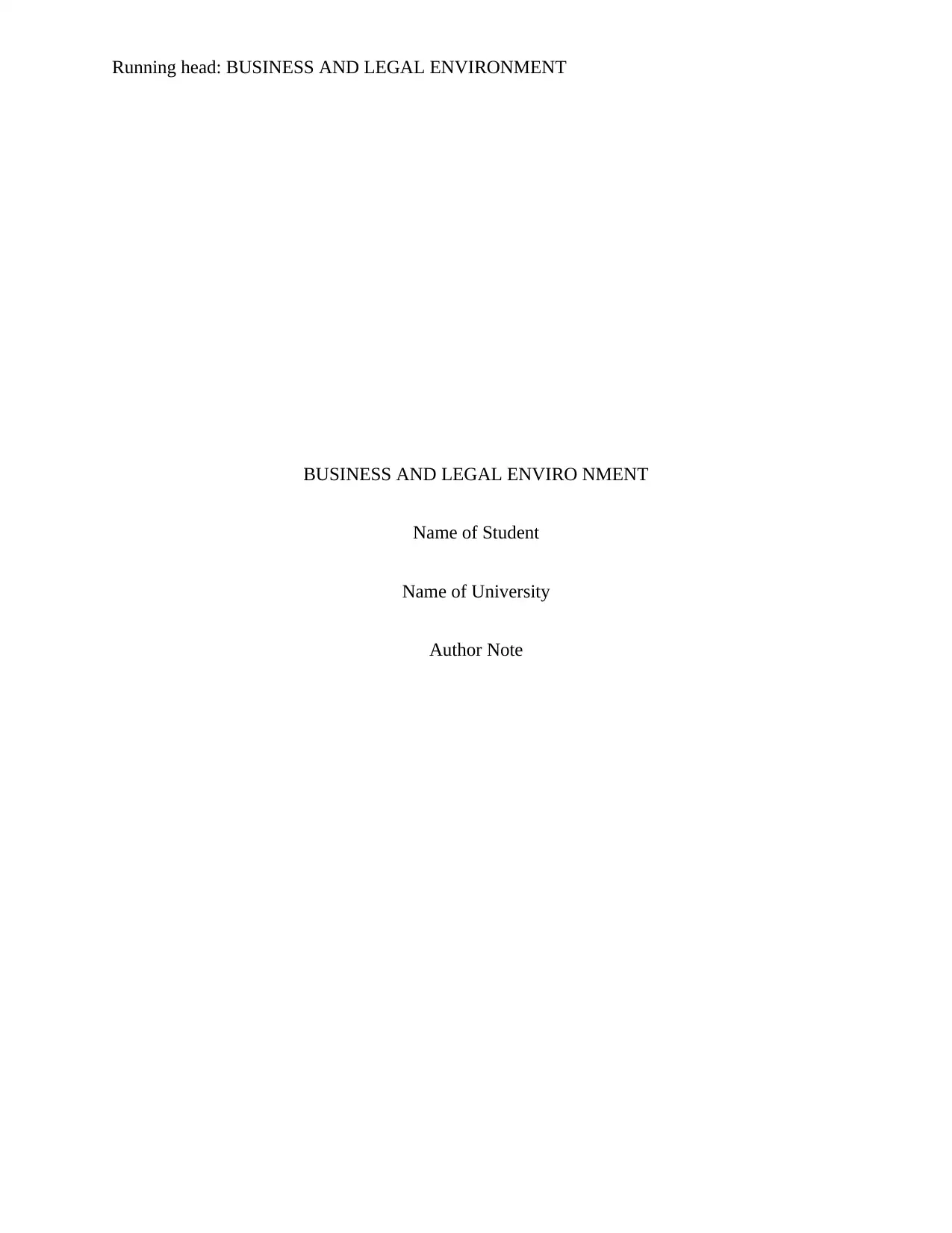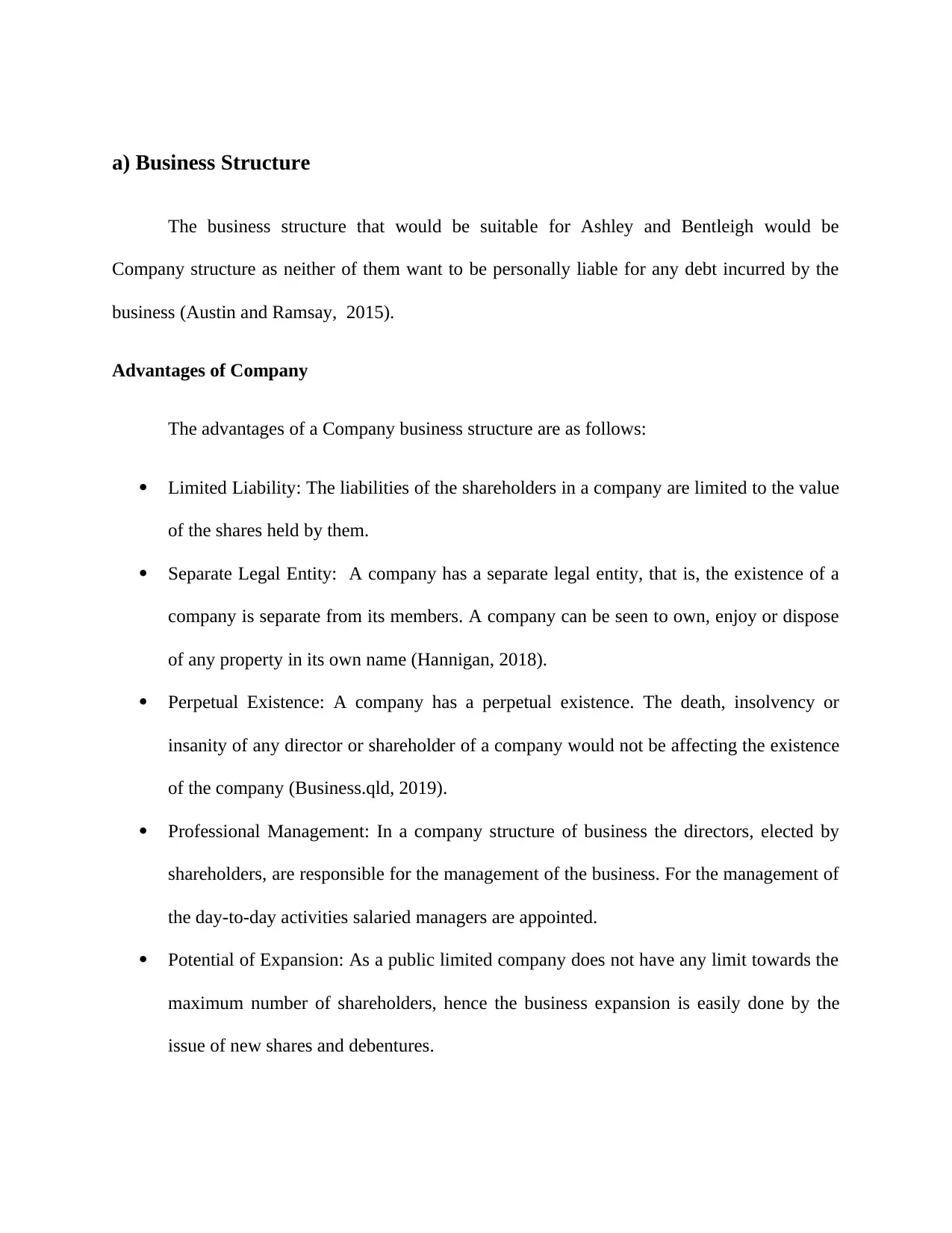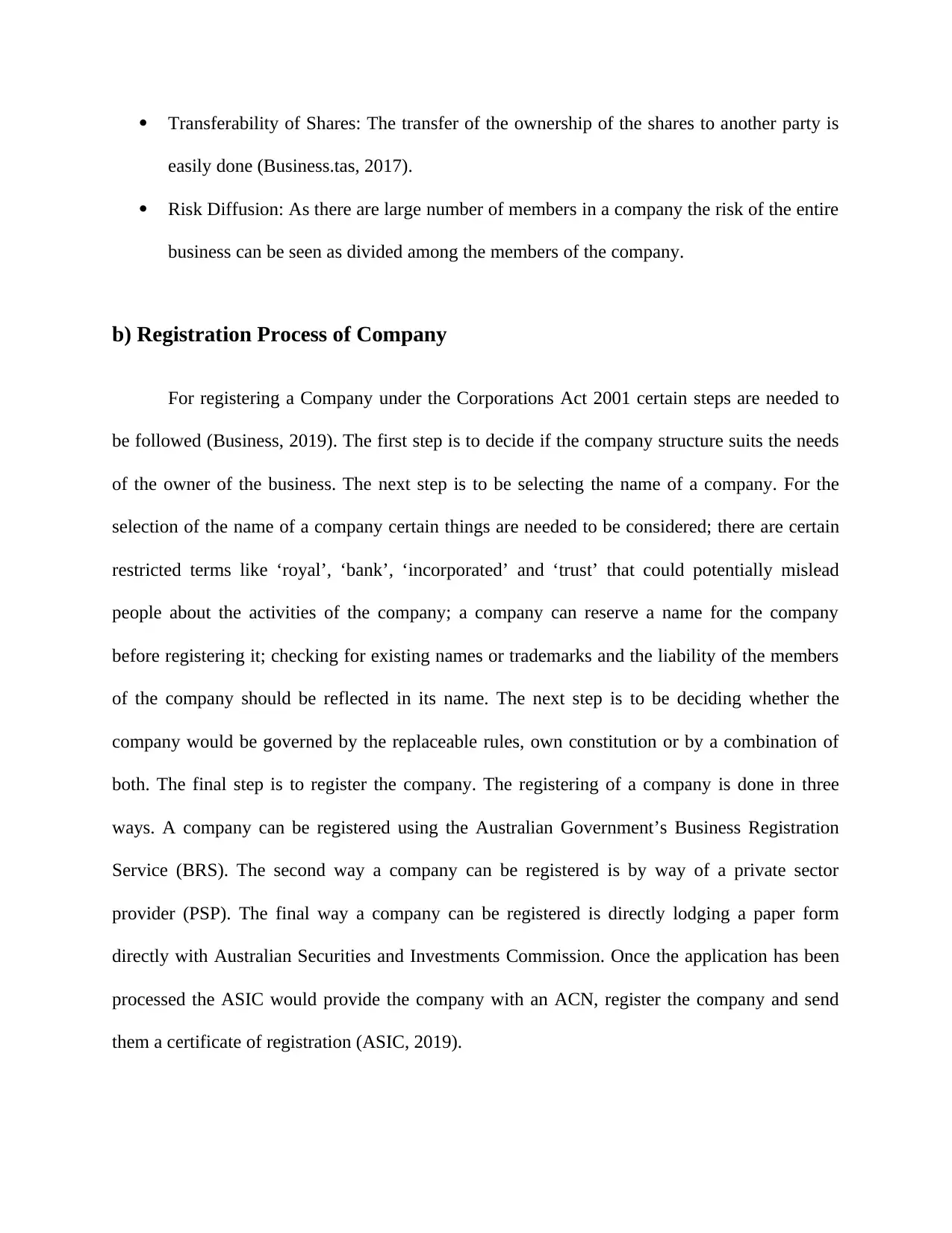Business and Legal Environment: Company Structure and Registration
VerifiedAdded on 2022/09/17
|4
|764
|22
Homework Assignment
AI Summary
This assignment delves into the optimal business structure for Ashley and Bentleigh, recommending a company structure due to its limited liability advantage. It outlines the benefits of this structure, including limited liability, separate legal entity status, perpetual existence, professional management, expansion potential, and transferability of shares. The assignment then details the company registration process under the Corporations Act 2001, emphasizing the importance of selecting a suitable company name, deciding on governance rules, and the three methods for registering a company: through the Australian Government’s Business Registration Service, a private sector provider, or directly with the Australian Securities and Investments Commission. The registration process culminates in the issuance of an ACN and a certificate of registration by ASIC. The document references key sources like the Corporations Act 2001 and various business resources from government websites.
1 out of 4










![[object Object]](/_next/static/media/star-bottom.7253800d.svg)